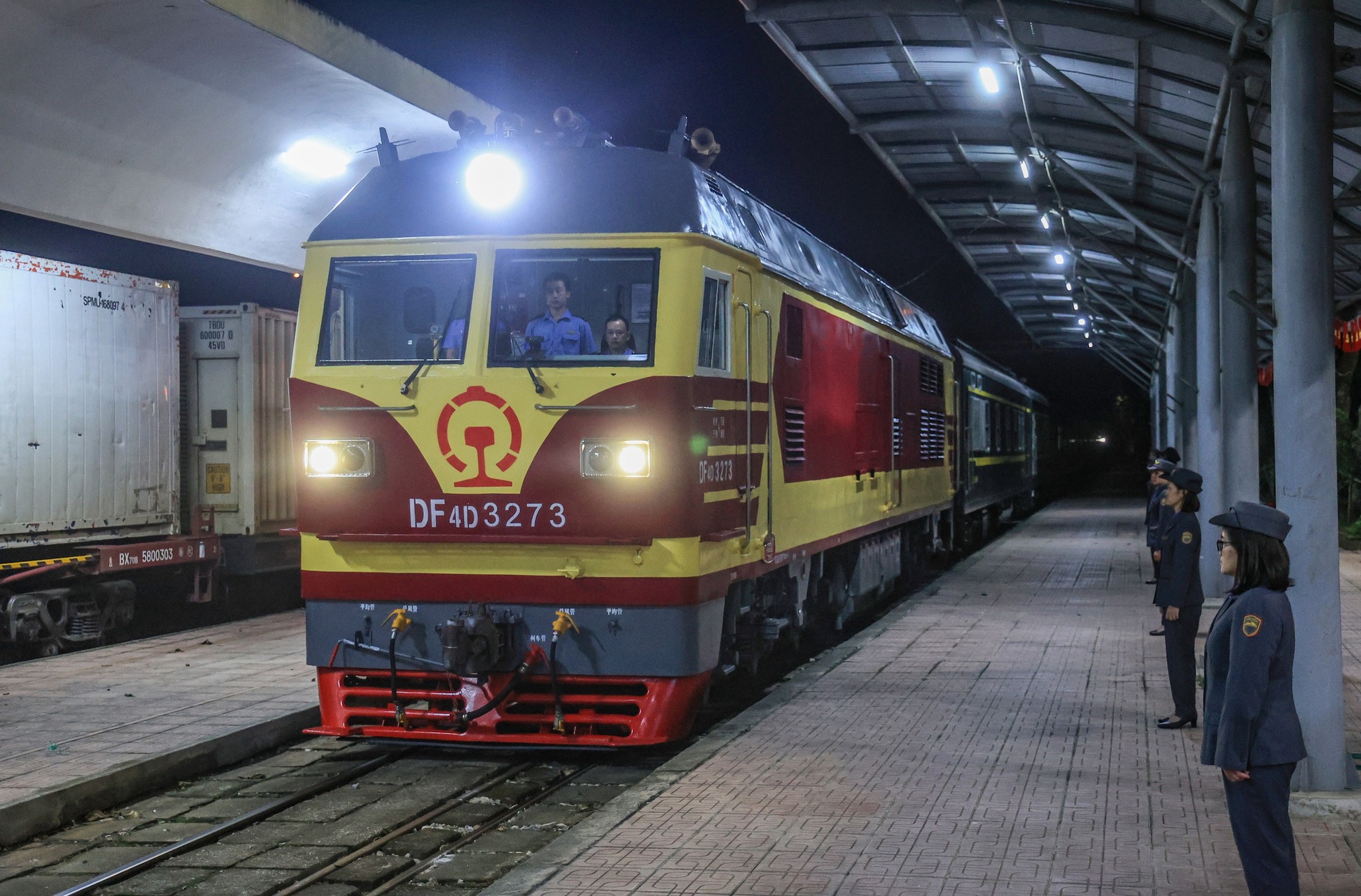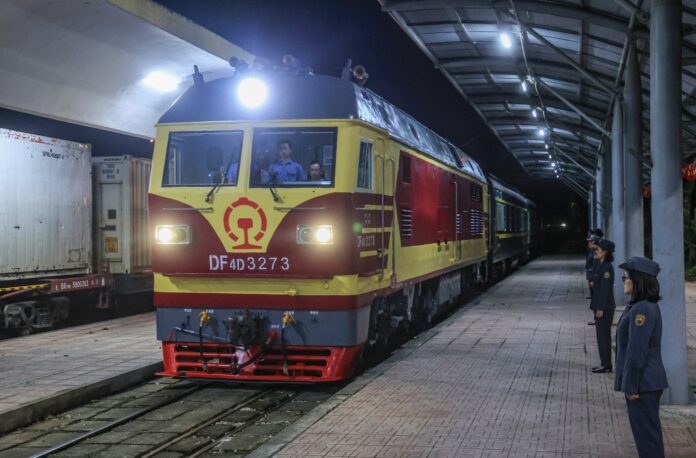The Ministry of Construction has assigned the preparation of pre-feasibility reports for six railway projects to be implemented during the period of 2025-2027 to various Project Management Units (PMUs). According to the Railway PMU (under the Ministry of Construction), these six projects are all important national railway projects, including two new routes: Hanoi – Dong Dang and Hai Phong – Ha Long – Mong Cai.

The Hanoi – Dong Dang railway route will be a new investment. Image: International freight train from Dong Dang station to China)
The Hanoi – Dong Dang route will start in Hanoi and end in Dong Dang (Lang Son province), passing through four provinces and cities with an approximate length of 156 km. The design includes a single track, electrification, a standard gauge of 1,435 mm, a maximum speed of 160 km/h, and mixed operations for passenger and freight trains. The estimated total investment is around $6 billion.
The Hai Phong – Ha Long – Mong Cai route is 187 km long and passes through Hai Phong and Quang Ninh provinces. It will use similar technical standards as the Hanoi – Dong Dang route, with an estimated total investment of $7 billion.
The remaining four railway projects include the following routes: Ho Chi Minh City – Can Tho, Bien Hoa – Vung Tau, Vung Ang – Mu Gia, and the Eastern Ring Road of Hanoi. Previously, these projects were assigned to the Railway PMU as the investor, but they have now been transferred to other PMUs under the Ministry to distribute resources and match implementation capabilities.
Among these, the Ho Chi Minh City – Can Tho railway project is in the pre-feasibility study phase. The route is approximately 175 km long, passing through six localities from Binh Duong to Can Tho. The investment scale includes double tracks, a standard gauge of 1,435 mm, and electrification. The line is expected to have 12 stations, 3 depots, 4 maintenance stations, and 5 large bridges crossing rivers. The design speed for passenger trains is 160 km/h, while freight trains will operate at 120 km/h. The preliminary total investment is estimated at $9 billion.
The Bien Hoa – Vung Tau railway project is 132 km long and connects to the Cai Mep – Thi Vai port area. It passes through Binh Duong, Dong Nai, and Ba Ria – Vung Tau provinces, with double tracks, electrification, 17 main line stations, 4 port stations, 3 depots, and a design speed of 160 km/h. The projected total investment is $6.1 billion.
The Vung Ang – Tan Ap – Mu Gia railway project is approximately 105 km long, starting at Mu Gia station (Quang Binh) – connecting to Laos, and ending at Vung Ang port (Ha Tinh). It will use a standard gauge of 1,435 mm, a single track, electrification, a speed of 120 km/h, with 9 stations and 1 depot. The estimated total investment is $2.1 billion. This route is a vital link in the East-West Economic Corridor.
The Eastern Ring Road of Hanoi (Ngoc Hoi – Lac Dao section) has been planned as part of the national railway network for the period of 2021-2030, with a vision towards 2050. The project has a total length of about 59 km (up to Thach Loi), of which the section from Ngoc Hoi to Kim Son, with a length of 31 km, has been studied with a scale of double tracks, one meter-gauge of 1,000 mm and one standard-gauge of 1,435 mm, a design speed of 120 km/h, and a total investment of approximately $1.2 billion.
Specifically, the Minister of Construction has assigned the Thang Long PMU to prepare the pre-feasibility report for the Hai Phong – Ha Long – Mong Cai railway project.
The PMU 2 is responsible for the pre-feasibility report of the Hanoi – Dong Dang railway project. PMU 85 will handle the Vung Ang – Mu Gia project.
The My Thuan PMU will work on the Ho Chi Minh City – Can Tho railway project, while PMU 6 will take charge of the Bien Hoa – Vung Tau project.
The Ho Chi Minh Road PMU has been assigned the Eastern Ring Road – Hanoi railway project.
















